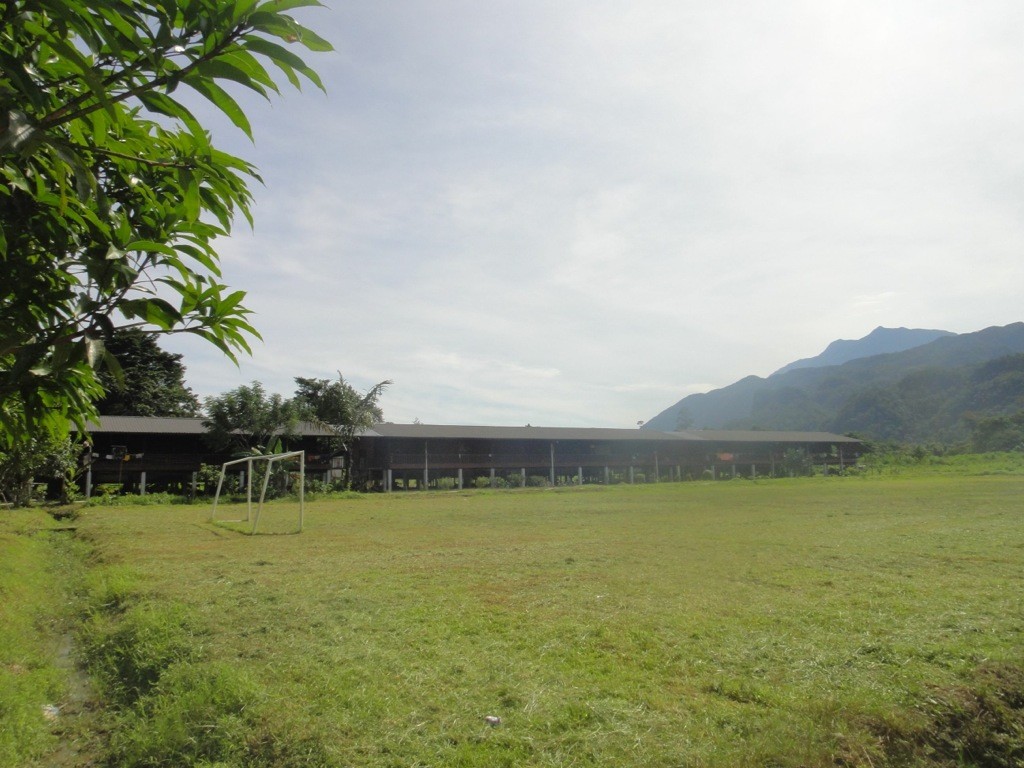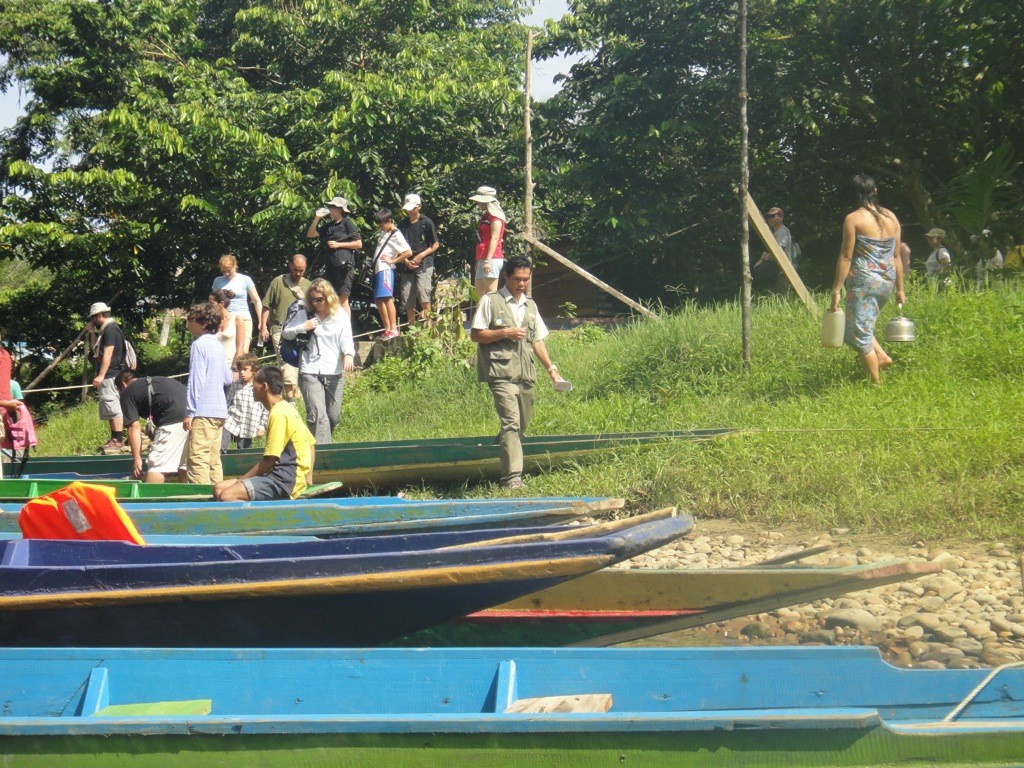From Hunter-Gatherers to Human Zoo
Leaving Mulu National Park on a little propeller plane, with rivers unspieling below us, a scattered handful of logging tracks carving their way across the hilltops, and merciful expanses of untouched forest before the gridded tracts of oil palms, it’s easy to see how remote the interior of Borneo once was.
In the days when the Brooke dynasty ruled Sarawak — even during the heady couple of years when Sarawak had an airforce (two seaplanes, one of which broke soon after arrival) — the trip would have taken weeks, if not months. Flights have changed all that.
And nomadic tribes like the Penan could live their life untouched, as they had for untold centuries.
Hunt and gather from the forest. Communicate in a language tailored to their life, one of several thousand languages the world is likely to lose during the nine year old’s lifetime.
Today? Well, in Mulu, they’re a human zoo.
Tourism in Mulu National Park takes the form of organised group tours. It’s just the way they do things. So Z and I ended up spending half an hour at the human zoo.
I’m sorry. On a visit to a traditional Penan longhouse at the Long Iman settlement to shop for handicrafts.

As he said, “There’s nothing traditional about this longhouse! They used to live in the forest. They never had longhouses.”
Until the early 50s, pretty much all the Penan were nomadic hunter-gatherers. Their language contained no word for thank you, because everything was shared. No word for forest, because it was all around them. No word for goodbye, because they lived so communally. And six different words for different kinds of “we”.
They had a developed sign language, used for hunting. And a woodland code, using twigs, leaves and marks on the bark, whether to mark trees as protected for future harvest or indicate the way they had passed.
Sharing was at the heart of their culture. Children learning to hunt would divide their catch in even parts among the very smallest. They moved from temporary settlement to temporary settlement every couple of months (each family had two huts, one for living, one for sleeping).
Lived without money, without a base, with very few possessions, believing, like many forest peoples, in the spirits of the forest
Then, in the 1950s, under the British colonial administration, the missionaries came. Persuaded many to abandon belief in “the evil jungle birds”. Wear (and own) clothes. Settle down.
The post-independence government, keen as ever to monetise the economy, control population movements and get tribal peoples out of the way of the logging companies (I’m sorry, improve access to government services), established settlements and built longhouses.
Turned the Penan over to producing handicrafts for the tourist trade, or subsistence farming rice, and their land to logging and oil palms. Such as this plantation we saw from the air.

In Long Iman village the old folk sit under a concrete structure, selling woven baskets and blowpipes that might once have had a use, like some sort of twisted bring and buy sale.
When the various tour groups arrived in our different boats, this young woman was down at the river bank. She’d been bathing, as you can tell from the wet hair and her sarong. Also drawn some water for boiling and cooking. She stopped for a while to wait, and stared in utter mystification as we trooped on up.
So how is life for the Penan today?
Well… Only around 300 Penan still live their traditional, nomadic lifestyle. Their tribal lands are being logged, their rivers polluted and a system of dams is set to flood much of what remains.
For those who have been relocated, life is tough. Most, ill-prepared for a cash economy, struggle to pay the water and electricity bills for the homes the government built. (Many of the new longhouses the government is building will have property rights attached, with consequent obligations: there is, of course, no compensation for their tribal lands.)
There is insufficient space for them to hunt and gather. Some don’t even have enough land to grow rice to feed their families.
And, according to the Penan Support Group, a coalition of NGOs which has been lobbying the state and national government for action for almost two years, many women and young girls in the more remote settlements are routinely raped by logging workers as they walk the forest tracks to school or to fetch water.
Which makes life within the human zoo seem, honestly, a pleasant alternative. For more on the Penan, and how to help, visit Survival International.

